Contents
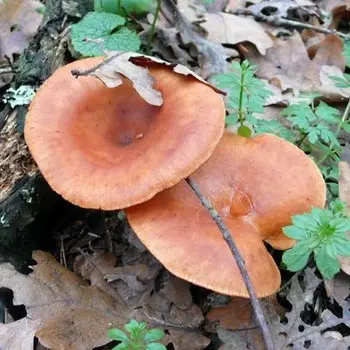 Rows are very poisonous mushrooms that should never be eaten. Another name for these mushrooms is poisonous talker. Some types of rows contain a large dose of the alkaloid muscarine, exceeding the content of this substance in the red fly agaric.
Rows are very poisonous mushrooms that should never be eaten. Another name for these mushrooms is poisonous talker. Some types of rows contain a large dose of the alkaloid muscarine, exceeding the content of this substance in the red fly agaric.
On this page you can find out what govorushka mushrooms look like, where they grow and what twins they have. You will see photos of poisonous rows and get acquainted with their description.
Poisonous talker whitish and her photo
Category: inedible.
Hat Clitocybe dealbata (diameter 2-6 cm): off-white or grayish, it may have gray or brownish spots. In a young whitish talker, the hat is slightly convex with evenly tucked edges, in an adult it becomes almost horizontally flat, and in an old one it is pressed inward. To the touch, the upper part of the fungus is smooth and silky, after rain it can become covered with sticky mucus, and in very dry weather it can crack.
Leg (height 2-5 cm): as a rule, curved, in the form of a cylinder, expanding from the bottom up. In old mushrooms it is usually hollow, in young ones it is always solid.
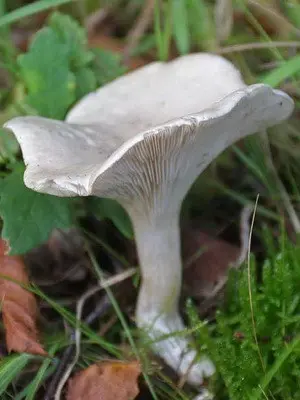
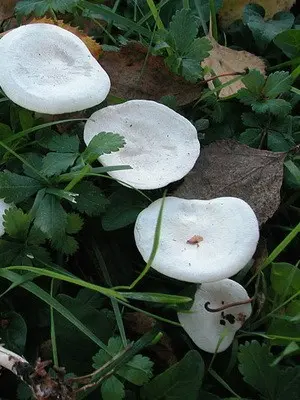
As you can see in the photo of the white talker, the color of the stem of the mushroom is the same as that of the cap; when pressed hard, it darkens.
Records: white, grayish or dirty yellow.
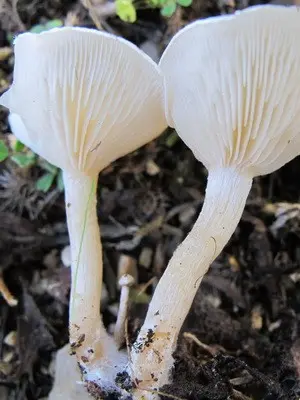
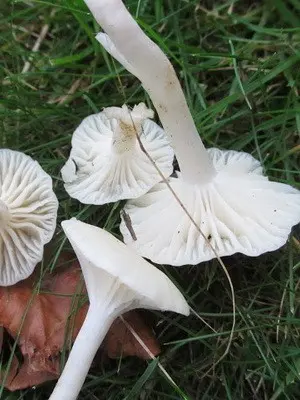
Pulp: fibrous, white. On the cut and when interacting with air, the color does not change. No special smell. A thick whitish juice stands out on the cut.


Doubles:other poisonous talkers, such as reddish (Clitocybe rivulosa) and waxy (Clitocybe cerussata), as well as edible mushrooms – meadow honey agaric (Marasmius oreades) and ivy (Clitopilus prunulus). From the reddish talker, whitish differs in color. Waxy is larger. Cherry has a persistent strong powdery smell, and meadow honey agaric, which can often be found nearby, has an almond smell and a brownish hat with loose plates.
When growing: from late June to early November in temperate countries of the Northern Hemisphere.
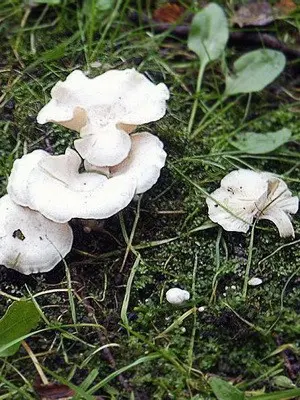
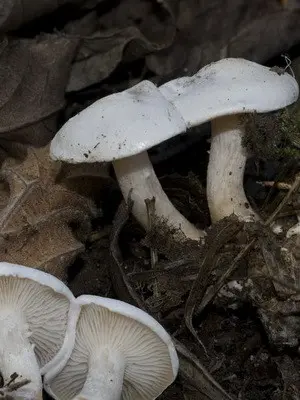
Where can I find: does not like dense forests and usually grows in lawns, pastures or in areas of forest clearing.
[ »»]
Eating: A very poisonous mushroom, it should never be eaten. The whitish talker contains a large dose of the alkaloid muscarine, which has a strong effect on the nervous system. The content of this substance surpasses even the red fly agaric.
Application in traditional medicine: does not apply.
Important! Symptoms of poisoning with a whitish talker appear quite quickly – within 30-40 minutes after consumption. Breathing is disturbed, blood pressure changes, severe diarrhea, sweating and vomiting begin. In this case, it is necessary to urgently seek qualified medical help, since only medications will be a reliable antidote for poisoning.
Other names: discolored talker.
What mushrooms look like talkers translucent
Category: inedible.
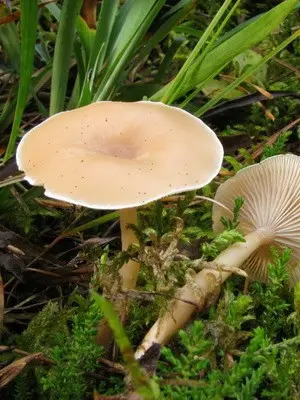
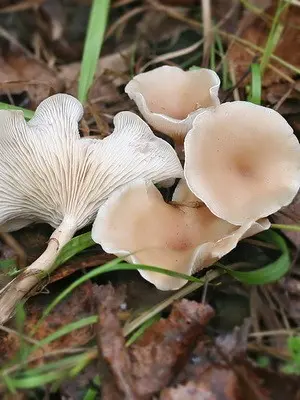
Hat Clitocybe diatreta (diameter 2,5-5 cm): prostrate or slightly depressed in the center. Feels smooth to the touch, without wrinkles or plaque. The color intensifies after rain and changes depending on the age of the fungus: in the young it is dark, and in the adult it is usually flesh or white. The edges of the upper part are wrapped inside, they are lighter than the core and almost transparent to the light.
Leg (height 2-5 cm): matte, fibrous, cylindrical shape. Smooth to the touch, sometimes with a slight pubescence. The color is usually light beige, slightly lighter than the cap, darkening noticeably at the base of the old mushroom. In a humid environment, the shade intensifies.
Plates of a translucent row: uneven length, firmly attached to the hat.
Pulp: whitish and odorless. On the cut and when interacting with air, the color does not change.
Doubles: are absent.
Where can I find: prefers sandy soils of pine forests, less often birch forests. This mushroom is very unpretentious and can grow on both fertilized and infertile soils.
An inedible rowing mushroom of this species grows from mid-May to the end of October in almost all countries of Eurasia and North Africa.
Eating: not used in cooking, as it is very poisonous.
Application in traditional medicine: traditional healers are not used.
In official medicine, scientists isolate the antitumor antibiotic diatretin from a translucent talker. The active substances of the artificially grown mushroom help in the treatment of tubercle bacillus.
Important! The mushroom contains rather large amounts of the alkaloid muscarine, which has a strong effect on the nervous system.
Other names: govorushka cup-shaped, govorushka diatreta.
[ »wp-content/plugins/include-me/ya1-h2.php»]
Poisonous mushroom talker (row) gray
Category: inedible.
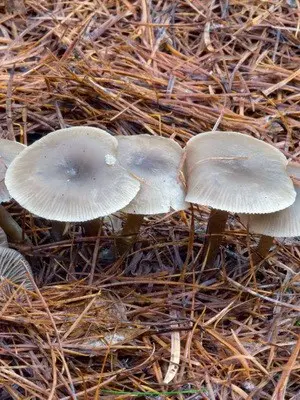
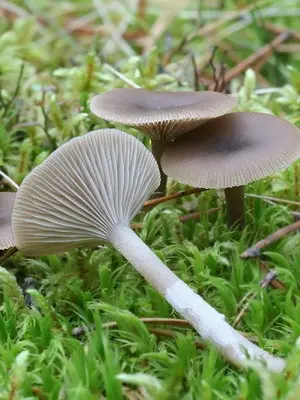
Cap of a gray poison row (Clitocybe vibecina) (diameter 3-6 cm): gray, light brown or beige, may fade to lighter. In young mushrooms, it is hemispherical, with time it becomes flatter or even depressed. The surface is dry and smooth, without plaque or scales. In humid forest it can be shiny, in dry and hot weather it shrinks. The edges of the cap are very thin, in young mushrooms they are bent to the inside and are lighter than the center.
Leg (height 3-8 cm): hard, cylindrical, solid, in old mushrooms it can be hollow. Dry, one color with a hat. At the very base there is a slight pubescence.

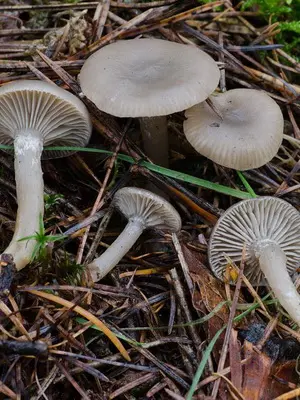
Pay attention to the photo of the gray talker: its plates are moderately frequent, all of different lengths. Pale gray or pale brown, more intense in humid weather.
Pulp: very thin and pale, with a rancid, floury odor and an unpleasant taste.
The name of the mushroom is translated from Greek as “bruise” or “bruise”.
[ »wp-content/plugins/include-me/goog-left.php»]
Doubles: outwardly similar to relatives-talkers – slightly odorous (Clitocybe ditopa) and slightly colored (Clitocybe metachroa). But the slightly odorous one has a shorter stem, and a grayish coating is noticeable on the surface of the cap, and the slightly colored talker has no smell.
The gray govorushka mushroom grows from the end of July to mid-September in almost all countries of northern Europe.
Where can I find: in coniferous and deciduous forests with high soil acidity. Especially likes to grow in moss.
Eating: not used due to unpleasant smell and taste.
Application in traditional medicine: does not apply.
Other names: grayish talker, grooved talker, brown talker, Lange talker.
Poisonous tiger row (talker) and her photo
Category: inedible.
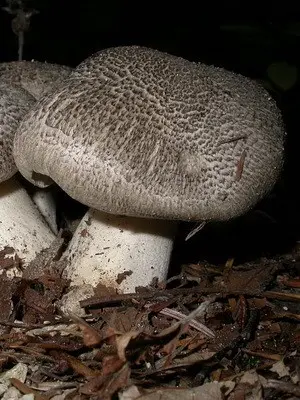
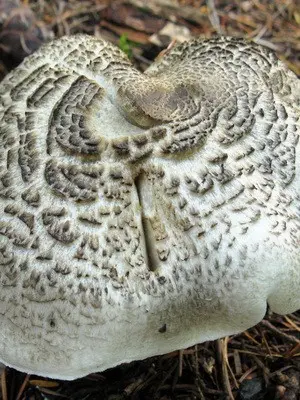
Tiger row hat (Tricholoma pardinum) (diameter 5-14 cm): grayish or off-white, in the shape of a hemisphere or bell, becoming more prostrate with time. The edges are very thin and rolled down. There are characteristic concentric flaky scales that are much darker in color than the rest of the mushroom skin.
Leg (height 6-16 cm): usually white or grayish, may be ocher at the base. Solid, has a cylindrical shape and tapers from the bottom up.
Records: white, rarely with a greenish tint, fleshy.

As you can see in the photo, the poisonous tiger row has a dense, yellowish flesh on the cut that does not change color when interacting with air. Mushroom pickers say that the tiger row has a rich floury smell.
Doubles: despite the characteristic surface of the cap, the brindle row can be confused with the rows of black-scaled (Tricholoma atrosquamosum), earthy (Tricholoma terreum), gray (Tricholoma portentosum) and reddish (Tricholoma orirubens). But in the black-scaled row, the scales cover not only the hat, but also the leg, while the earthy one lacks the characteristic shade of the plates and the floury smell. The gray has scales on the cap, but very rare.
And in the reddish row, they have a rich olive tint and pinkish plates.
When growing: from early August to mid-October in temperate countries of the Northern Hemisphere.
Where can I find: on calcareous soils of deciduous and coniferous forests.
Eating: not used, as it is very poisonous.
Application in traditional medicine: does not apply.
Important! Tiger rowing can deceive an inexperienced mushroom picker with a pleasant aroma. But you can’t eat it! The toxin contained in this fungus is still practically not studied, and the symptoms of poisoning appear very quickly in the form of nausea and severe vomiting.
Other names: leopard rowing, poisonous rowing.









